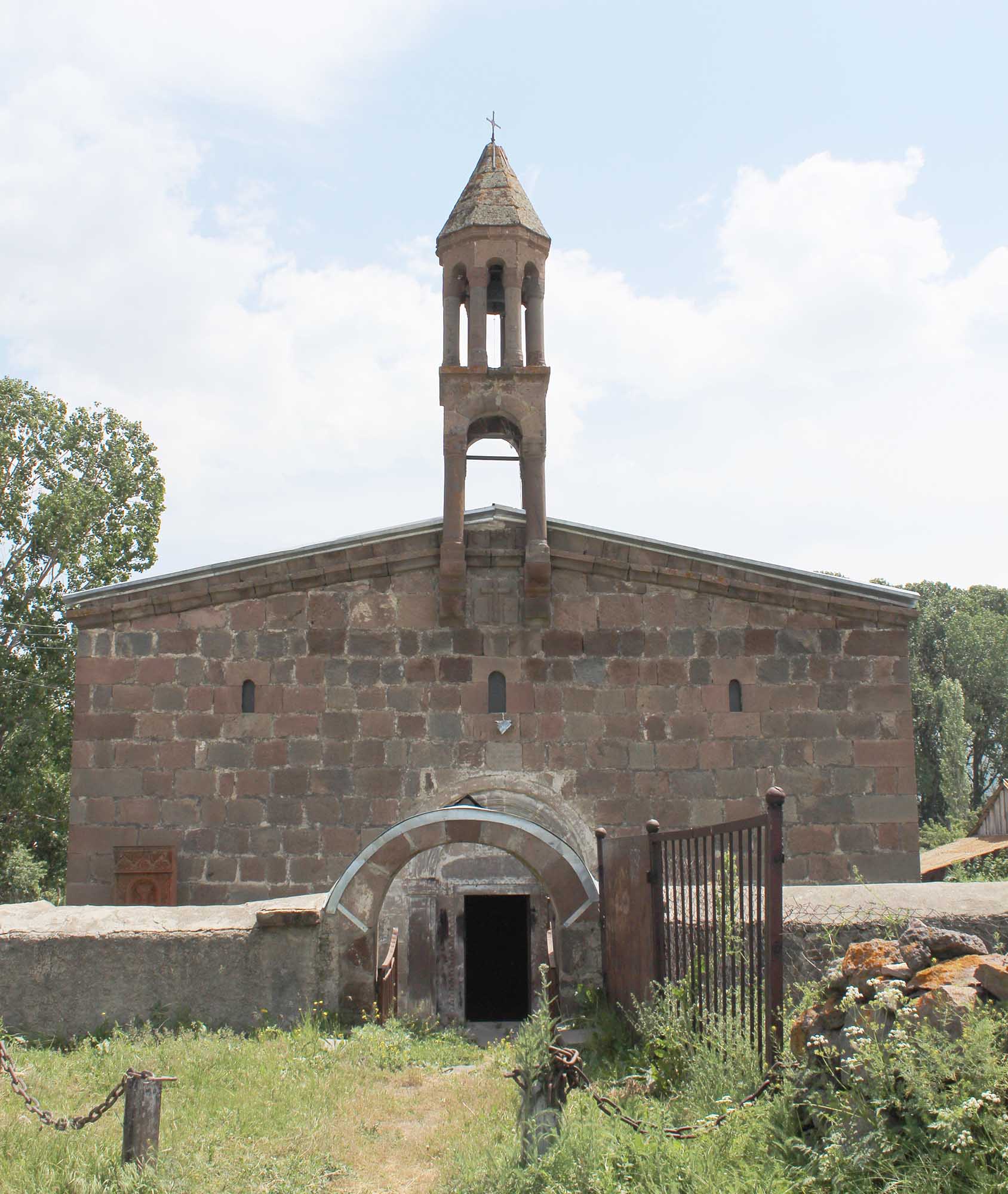Surb Astvatsatsin( Holy Mother of God) Church

Baralet was one of the villages with mixed nations in Javakhketi. Here Armenians and Georgians have lived side by side. So, as of 1873, 2/3 of 80 households were Armenians and 1/3 of them were Georgians.[1] Before the construction of the Armenian church ,the Armenians and Georgians of the village had prayed in the 13 th-century church built by the Georgian queen Tamar’s son Giorgi-Lasha. Today, the Armenian Surb Astvatsatsin and Georgian Surb Stepanos churches are acting in the village. For many years, Baralet had been the pastoral center of 23 surrounding villages. The village is also rich with historical monuments. At its northern hills, the ruins of the cemetery and walls of the Armenian church are still preserved.
Church construction: Primarily the wooden Surb Astvatsatsin Church of Baralet was built still in 1855 by means of the Armenian population of the village.[2] In general, the church is known for its two names: Surb Khach( Holy Cross) and Surb Astvatsatsin( Holy Mother of God). The church was mentioned by the name of Surb Khach until the 1840s,[3] after which it was named Surb Astvatsatsin. In its turn, the new church of the same name was built in 1869 on the site of the old church.[4] The proving construction protocol has also been preserved.[5] The cemetery is extended on the southern side of the church. The ancient tombstones date back to the first half of the 19th century.[6]
Architecture: The church is built of tuff and belongs to the hall type. The external dimensions are 18.00x9.86 m. The church is surrounded by a wall.[7] The facades are not decorated. There are decorative cornices between the walls and the roof. There are square windows on the southern and northern walls. The only carved entrance is on the western wall, above which there is an Armenian inscription. The gable roof is installed with tinplate. The interior walls are plastered and painted. The bell tower set on eight pillars is at the top of the western façade . The Altar is on the eastern part, with its chapels built on its right and left sides. The Baptismal Font is on the northern wall. The ceiling is covered with plastic modules and is curved from inside.[8]
Parish priests: The priesting priests of Surb Astvatsatsin Church in the 1850s were Father Karapet Ter-Martirosyan,[9] in the 1860s Father Hakob Ter-Karapetyan ,[10] in the 1870 -80s Father Karapet Ter-Karapetyan,[11] in the 1900s Father Enovk Seferyan.[12]
School: In the 1860-1870s a church-parish school was functioning in the village, which was closed due to the opening of the state school in the 1880s. In 1895 a library-reading hall was opened in the village.[13]
Church Renovation and re-consecration: In the 1930s the church was closed and used as a grain storage. The poor and destroyed state of Surb Astvatsatsin Church hasn’t given the local Armenians no rest for years. Finally, in 2004, thanks to the donations of former villagers living in Russia and Armenia, the church was completely renovated, improved and fenced.
The Armenian Surb Astvatsatsin Church in the village of Baralet of Akhalkalak region was consecrated on November 20, 2005, by the Primate of the Diocese of the Armenian Apostolic Church in Georgia, Bishop Vazgen Mirzakhanyan.
According to the canons of our Apostolic Holy Church, the Primate celebrated the consecration ceremony, handed the Message of Pontifical blessings and appreciation to the main donateors, which was followed by the Divine Liturgy.[14]
The Petrosyan dynasty installed kahchkar dedicated to Surb Astvatsatsin Church in the church yard. Tombstones with an Armenian flourishing cross of different times have also been preserved in the area.[15]
Diocese of the Armenian Apostolic Church in Georgia
The Armenian Historical and Cultural Heritage Study Center in Georgia
[1] S. Karapetyan, Javakhk, Yerevan, 2006, p.102
[2] “Echmiatsin”, 2005, Ժ-ԺԱ (10-11), էջ 157
[3] NAA, ֆ. 53, ց. 1, գ. 3800, թ. 4-ի շրջ
[4] “Nar-Dos”, 1895, N 150, p. 3
[5] S. Karapetyan, in the same place, p.105
[6] S. Karapetyan, in the same place, pp. 105-106
[7] S. Karapetyan, in the same place
[8] Georgian-Armenian Historical and Cultural Heritage Study Center.
Diocese of the Armenian Apostolic Church in Georgia
[9] NAA, ֆ. 53, ց. 2, գ. 888, թ. 2
[10] NAA , ֆ. 53, ց. 2, գ. 869, թ. 2
[11] NAA, ֆ. 53, ց. 2, գ. 873, թ. 2; գ. 906, թ. 3
[12] NAA, ֆ. 53, ց. 2, գ. 878, թ. 2
[13] “Murch”, 1896, N 12, p. 1642
[14] “Echmiatsin”, 2005, Ժ-ԺԱ, p. 156
[15] The Armenian Historical and Cultural Heritage Study Center in Georgia.
Diocese of the Armenian Apostolic Church in Georgia
 Հայերեն
Հայերեն  ქართული
ქართული  English
English  Русский
Русский 

